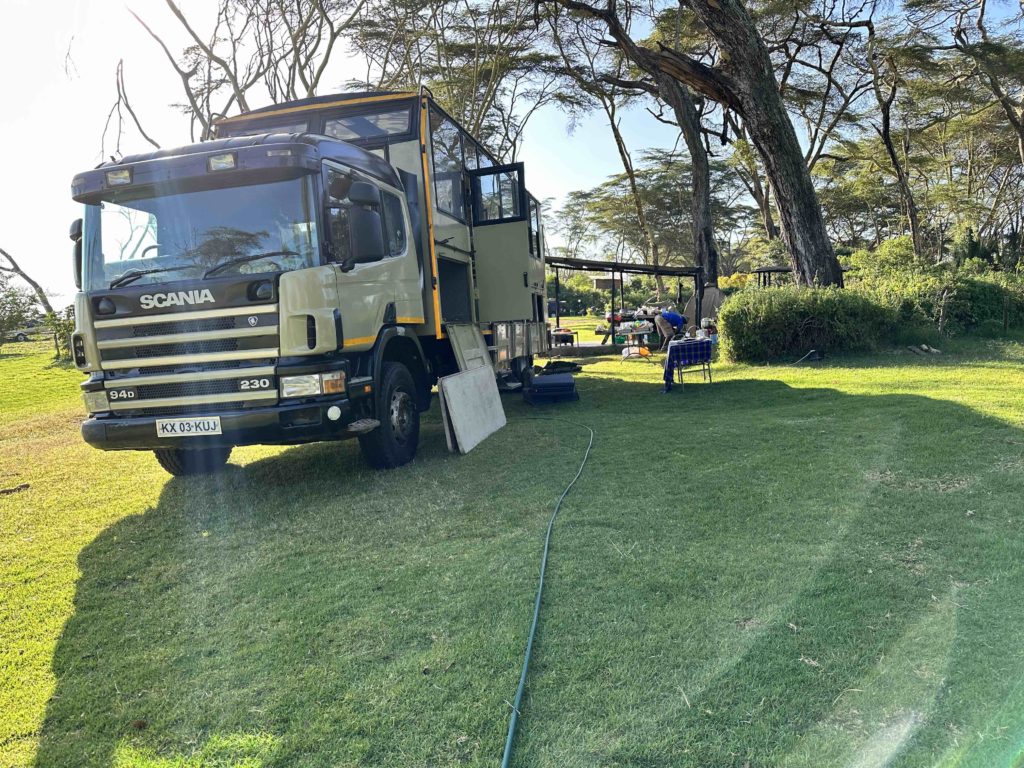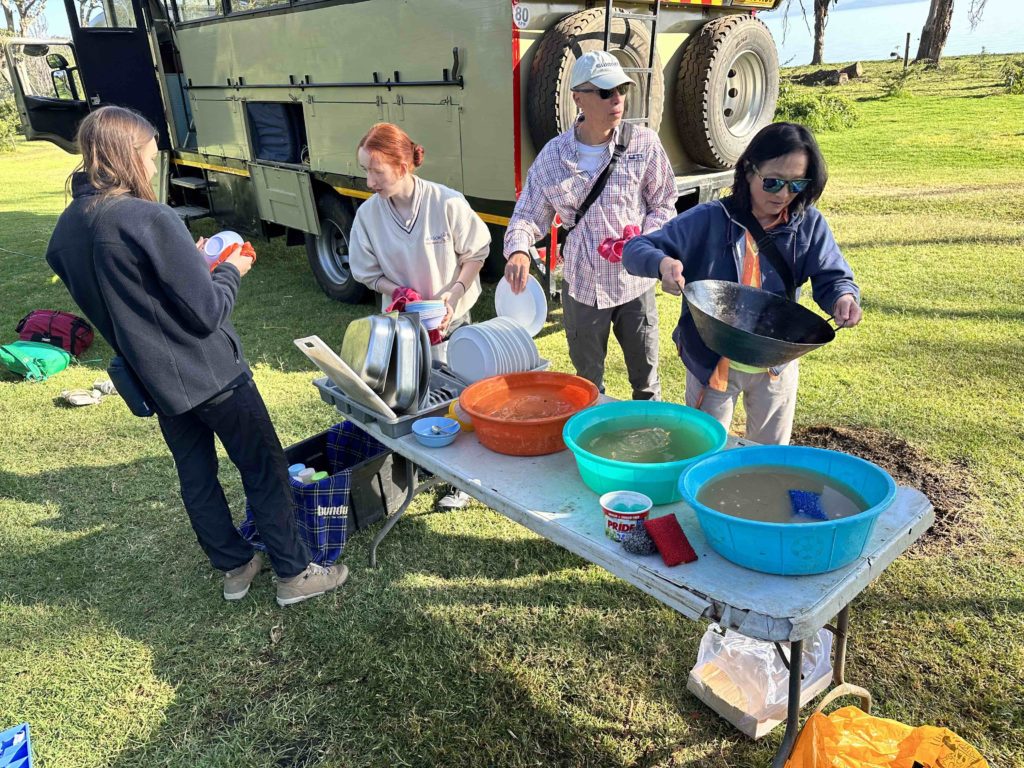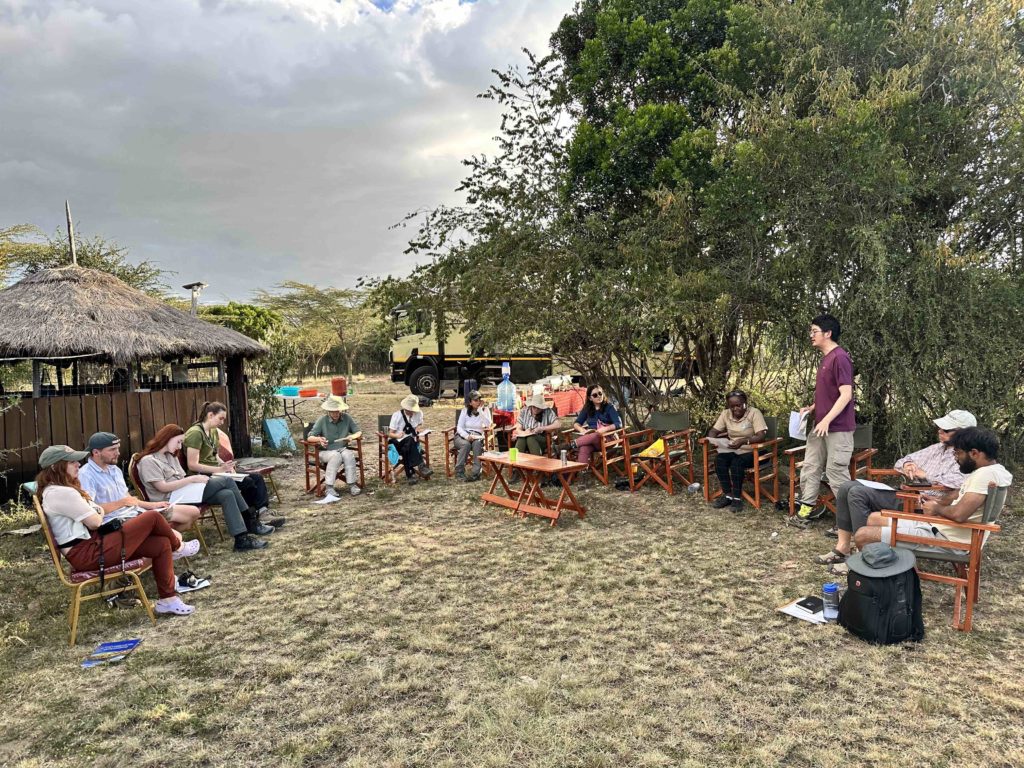Blog post 4. Madeleine and Arjun
Throughout this course, we’ve discussed the pervasive misconception that Africa is a homogenous entity. We are learning that this is far from true, as Africa is rich with diversity—in terms of flora, fauna, and geology, as well as culture. Extending this idea, we are already seeing the vast diversity present in just this small portion of the country of Kenya. This was perhaps most apparent today, where we woke up at Lake Naivasha—a freshwater ecosystem—and ended up in Maasai Mara—a savannah—and travelled through pastoral, agricultural land, and urban areas, among others. On our journey, we saw a change in the bird and mammal species, as well as the landscapes and geological features. These changes were apparent in only 230 km of travel, and showcase the diversity that is present in only a small geographical range. Having seen this, it would be exceedingly foolish to treat Africa—or even Kenya—as a singular culture or ecotype. The hippopotamuses, African Fish Eagles, and Lilac-Breasted Rollers of Lake Naivasha are remarkably different from the White-Browed Sparrow Weavers, Cutthroats, and field mice we saw in Maasai Mara. In the next several days of this course, we look forward to seeing more of Kenya’s diversity and learning about the plants and animals of different ecosystems.
This morning started relatively early, by waking up before the sunrise over Lake Naivasha. Though we needed to pack our bags and tents and have another tasty breakfast prepared by our wonderful cooks, we had enough time to sneak in some birding and photography. Many of the birds we saw are already familiar to us, such as the Egyptian Goose and Superb Starling. We even had a Glossy Ibis sighting. For over a half hour, Allen struggled to take a photo of a Lilac-Breasted Roller in flight but, in his words “failed miserably” (though we are sure his photos are actually great). We said goodbye to Lake Naivasha and its incredible wildlife and began our 5-hour drive to our next destination, Maasai Mara.
On our travels southward to Maasai Mara, we observed great changes in the landscape. From the brown silts and sands of Lake Naivasha and its lush vegetation, we entered lands of hardened clay and scrubland. But after arriving at our camp, just outside Maasai Mara National Reserve, the wildlife was abundant. Nests of White-Browed Sparrow Weavers graced many of the small trees scattered around camp. The weavers flew amongst us without fear, so bold that they would eventually approach within metres of us. Upon arrival at the camp, we were greeted by yet another Steve, a Maasai member of the staff. He sold us some wonderful trinkets crafted by his mother. Not long after, we gathered around to listen to the final article presentations, by Arjun, Meg, and Allen. The presentations sparked some lively conversations about wildlife conservation, the nature of Indigeneity, and statistical methods of inference, while the weavers looked on. Throughout the presentations and later into the evening, we saw a few other birds as well, including the Cutthroat (a type of waxbill) and the Bare-faced Go-away-bird. Then as usual, we had a delicious dinner. And with that, we are off to our tents to sleep, hopeful to hear the rolling cackles of hyenas in the distance, as promised by the hyena information sheets hung up next to the squatting toilets.

Packing the truck ready for Naivasha

Helping with dishes

Allen giving a seminar at Tayari Luxury Tented Camp
Thank you so much for the discussion about the myth of African or even Kenyan homogeneity.
I was just reading a great National Geographic article explaining there is more genetic diversity among people on the African continent than the rest of the world combined!
I know that just reading this post has made me more aware of speaking of individual African countries not just constantly referring to the continent as one unit.
I suspect it’s an artifact of colonialism that we still view Africa through that lens. It’s why I’m grateful you’re offering this long distance education via your fabulous blog!
Also, I would have loved to hear the discussion on the nature of Indigeniety.
Thanks again!
I was also struck by the examples of diversity within even a 230-km drive. What is it, I wondered, that prompts so many to imagine and describe Africa as a homogeneous entity, culturally, policltically, and environmentally ? Ignorance ? Laziness? Paternalism? I fear it is a mixture of all that and more. As a descendent of generations who vaunted their superiority over their East Indian (also not homogeneous) neighbours while living off the best of the stolen land, I feel much has been lost in refusing to recognize and celebrate the wonderous diversity of Africa (and India). I read this blog with joy, delighted to sense a new generation with eyes wide open and respect and care in their veins. I appreciate having a window on your journey and learning.
Like Cathy and April who commented on this post, this blog does a wonderful job of demonstrating the diversity of one part of Kenya , and by extension, the mind-boggling diversity in all of Africa. And like those other commenters, I am left wondering why it is that Africa is often referred to as a single, homogeneous entity.
As a biologist, I am loving all the details about the plant and animal life, the ecosystems, and the diversity. But I am equally loving the fact that the students are participating in discussions about the nature of Indigeneity, the lasting effects of colonialism, stereotypes about Africa, and so on. These students are getting so many gifts through this course, and I am so appreciative that they are sharing them with those of us reading the blogs! I think all of us would benefit from the types of discussions the students are having.
I know the students will come back as better biologists, and I believe they will return as better and better-informed people, too (although I am sure they are all pretty great to begin with!)